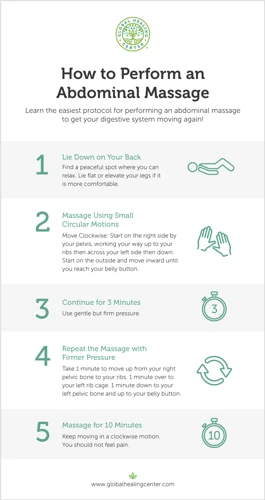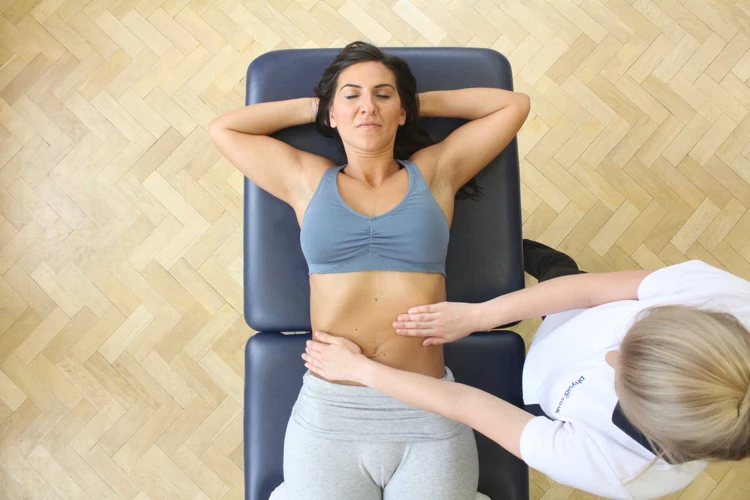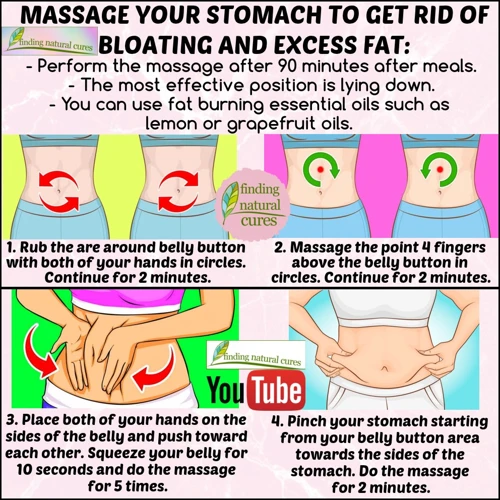Are you interested in learning about what a abdominal massage is and the benefits it can bring? Abdominal massage is a practice that involves gentle massage of the abdomen to provide relief from various ailments, including physical and emotional issues. The massage is said to help improve circulation, reduce stress, and aid in digestion. In this article, we will explore what abdominal massage is, the benefits it can bring, and the different techniques used. We will also discuss potential risks associated with abdominal massage and who should avoid it.
Contents
What is Abdominal Massage?

Abdominal massage is a type of massage therapy specifically targeting the abdominal region. It is used to help relieve tension and pain in the abdominal area, as well as to improve digestion and overall health. Abdominal massage can be done manually or with the help of massage tools.
During abdominal massage, gentle pressure is applied to the abdomen in circular motions. This helps to stimulate the internal organs, relax the abdominal muscles, and improve digestion. Abdominal massage also helps to move toxins from the body and reduce stress.
Benefits of Abdominal Massage
Abdominal massage offers a range of health benefits, including improved digestion and improved circulation. It can also help to reduce bloating, reduce cramps, and reduce stress. Abdominal massage can also help to improve the appearance of the skin, reduce inflammation, and improve overall health.
Techniques for How to Massage Abs
When performing abdominal massage, it is important to use the right technique. The most common techniques include circular motions, gentle kneading, and light tapping. It is important to start the massage with light pressure and to increase the pressure as needed. When performing abdominal massage, it is important to be aware of any areas of the abdomen that feel tender or sore.
It is also important to pay attention to the breath, as abdominal massage can be a powerful tool for relaxation. Taking slow, deep breaths helps to release tension and to relax the abdominal area.
Abdominal massage can be performed by a massage therapist or at home. If you choose to perform abdominal massage at home, it is important to consult with your doctor first to ensure that it is safe for you.
Benefits of Abdominal Massage

- Relieves Stress – Massaging the abdominal muscles can help release tension and reduce stress.
- Improves Digestion – Abdominal massage can help improve the digestive process by stimulating the digestive organs and muscles.
- Boosts Blood Circulation – Massaging the abdominal area can help improve blood circulation to the organs, supplying them with oxygen and nutrients.
- Reduces Bloating – Abdominal massage can help reduce bloating by improving digestion and removing gas and fluid buildup in the abdomen.
- Increases Relaxation – Abdominal massage can help promote relaxation by soothing the muscles and calming the mind.
By learning how to massage abdominal muscles, you can reap these benefits and more.
Techniques for Abdominal Massage

- Gentle Circular Massage: Start by placing your hands on the lower abdomen and make small, gentle circular motions. This helps to relax and loosen the muscles, as well as improve local circulation.
- Fingertip Massage: Use your fingertips to make small circles on the lower abdomen. This helps to stimulate the digestive system and reduce tension in the abdominal area.
- Stretching: Gently stretch the abdominal muscles using both hands. This helps to improve flexibility and reduce tension.
- Pressing and Rubbing: Use both hands to press and rub the abdomen in a slow, gentle manner. This helps to stimulate the digestive system and reduce tension.
What happens when you massage your belly is that you can help to relax the muscles, improve circulation and reduce tension, which can result in improved digestion and overall health.
What Happens When You Massage Your Belly?

Massaging your belly can help to reduce bloating, relieve digestive issues, and improve circulation. During a massage, pressure is applied to the abdomen with circular motions. This helps to break up the gas bubbles in the intestines, allowing for the release of any gas, toxins, or waste build-up. Massaging the abdomen can also help to relax the muscles, relieving tension and pain. Additionally, it can stimulate blood flow, which helps to improve circulation and reduce abdominal discomfort.
The benefits of abdominal massage are not only physical. It can also help to promote mental relaxation and reduce stress. Massaging the abdomen can help to calm the mind, improve focus, and reduce overall stress levels. It can also help to improve mood and reduce symptoms of depression and anxiety.
Despite these benefits, it is important to note that abdominal massage can cause discomfort in some cases, such as when people massage too hard or too frequently. Additionally, some people may experience mild discomfort or pain when massaging their abdomen. This is often caused by tension in the abdominal muscles or issues in the digestive system. If you experience any discomfort during abdominal massage, it is important to stop and seek advice from a medical professional.
Overall, abdominal massage can provide many physical and mental health benefits. However, it is important to understand why does my stomach hurt when I massage it, as well as the potential risks, before attempting to massage your stomach.
How to Massage Abs

Step 1: Lie down on your back and make sure your abdomen is exposed. You may want to wear something comfortable such as yoga pants and a tank top.
Step 2: Apply a small amount of oil or lotion to your hands and start to massage your abdomen in a circular motion. Start near your navel and move outward in a clockwise direction.
Step 3: Continue to massage the abdomen in a circular motion for about 1-2 minutes. Use the heel of your hands to apply pressure to the area and make sure to cover the entire abdomen.
Step 4: Switch to a more vigorous massage. Apply firm pressure with your fingertips and knead the abdomen in an up and down motion.
Step 5: Continue to massage the area in an up and down motion for 1-2 minutes.
Step 6: Finish off with a light massage using your fingertips and feather-like strokes. This will help to relax the abdominal muscles and increase circulation.
Step 7: Repeat this process 2-3 times per week for best results.
How to Massage Abdominal Muscles

Abdominal massage is a type of massage that focuses on the area around your abdomen, which includes the stomach, side, and back muscles. This massage technique can be used to help relieve tension and pain, stimulate circulation, and improve digestion.
Preparation
Before beginning your abdominal massage, it is important to prepare yourself by lying down comfortably on a flat surface. If you are using a massage table, make sure that the table is at a comfortable height and that the massage oil is warmed to a comfortable temperature.
Gentle Stroking
Begin your massage by gently stroking the abdominal area with your palms. This can help to relax the muscles and increase circulation. Start at the top of the abdominal area and work your way down in a circular motion.
Firm Pressure
Once you have finished stroking the abdominal area, you can begin to apply more firm pressure. This will help to relieve tension and stimulate circulation. You can use your palms or knuckles to apply firm pressure to the abdomen.
Pressure Points
In addition to the general massage techniques outlined above, you can also target specific pressure points on the abdomen. To do this, you will need to find the specific pressure points and apply pressure to them for about half a minute at a time. This can help to release tension and improve circulation.
Conclusion
Abdominal massage is a great way to relieve tension and pain, stimulate circulation, and improve digestion. By following the steps outlined above, you can easily perform an abdominal massage at home.
Why Does My Stomach Hurt When I Massage It?

Abdominal massage, when done correctly, can be a very effective way to alleviate pain in the abdomen and improve overall health. However, it is important to understand that abdominal massage can cause discomfort in some cases. This can be caused by the massage itself, or by underlying medical conditions, such as irritable bowel syndrome or endometriosis.
Muscle Spasm
When the abdominal muscles are too tight, massage can cause a muscle spasm which can cause pain. This is particularly true of the lower abdominal area and can be caused by tension in the abdomen, as well as by other factors such as dehydration or poor posture.
Irritable Bowel Syndrome
Irritable bowel syndrome (IBS) is a common digestive disorder which can cause abdominal pain. Massage can cause further irritation and pain in IBS sufferers, as the massage can stimulate the sensitive tissue in the intestine.
Endometriosis
Endometriosis is a condition in which tissue similar to the lining of the uterus is found outside of the uterus. This tissue can cause pain and discomfort when massaged, as it is often very sensitive.
Hernia
Massaging the abdomen can cause pain in those who have an abdominal hernia. This is because massage can increase the pressure on the hernia, causing further pain or discomfort.
What To Do
If you experience pain or discomfort when massaging your abdomen, it is important to seek medical advice. It is also important to ensure that the massage is being done correctly, as incorrect technique can cause pain or further injury.
| Condition | Cause |
|---|---|
| Muscle Spasm | Tension in the abdomen |
| Irritable Bowel Syndrome | Massage can stimulate sensitive tissue in the intestine |
| Endometriosis | Massage can cause pain in sensitive tissue |
| Hernia | Massage can increase pressure on the hernia |
If you experience pain or discomfort when massaging your abdomen, it is important to seek medical advice. Massage can be a beneficial and therapeutic practice, but it is important to ensure that it is done correctly and that any underlying medical conditions are taken into account.
Side Effects and Risks of Abdominal Massage
Abdominal massage is generally considered safe when performed by a qualified massage therapist. However, there are potential risks and side effects associated with the practice.
Pain: Abdominal massage can cause discomfort or pain. This is especially true if the massage is too intense.
Internal Organs: Abdominal massage can cause internal organs to move or shift slightly. This can lead to discomfort, pain, or pressure.
Digestive Issues: Abdominal massage can cause digestive issues, such as bloating, gas, or cramps.
Skin Irritation: If a massage therapist uses too much oil or lotion, it can cause skin irritation or a rash.
Infection: If proper hygiene is not maintained, abdominal massage can lead to infection.
Hernia: Abdominal massage can aggravate an existing hernia.
Bruising: Abdominal massage can cause bruising, especially if the massage is too vigorous.
Nausea: Abdominal massage can cause nausea, especially if the massage is too intense.
Fainting: Abdominal massage can cause a person to faint, especially if the massage is too intense.
Blood Clots: Abdominal massage can cause a blood clot to form, especially if the massage is too intense.
Organ Damage: Abdominal massage can cause damage to internal organs, especially if the massage is too vigorous.
It is important to speak with a qualified massage therapist before undergoing abdominal massage and to follow their instructions for safety and comfort.
Frequently Asked Questions
What are the Potential Health Benefits of Abdominal Massage?
Abdominal massage can offer a range of health benefits. These include:
- Improving digestion: Massaging the abdomen can help stimulate digestion and reduce bloating, constipation and gas.
- Reducing stress: Abdominal massage can help release tension in the abdominal area and help reduce stress.
- Improving circulation: Abdominal massage can help improve blood flow to the abdominal area and other organs.
- Strengthening the immune system: Massaging the abdomen can help boost the immune system by stimulating the lymphatic system.
- Reducing pain: Abdominal massage can help reduce pain in the abdominal area and other parts of the body.
- Promoting relaxation: Massaging the abdomen can help you relax and improve your overall wellbeing.
What kind of techniques are used in abdominal massage?
Abdominal massage techniques typically involve slow, circular motions, with the practitioner using their fingers, palms and fists to massage the abdominal area. The massage can be done either externally or internally, depending on the practitioner’s preference. Abdominal massage can also include stretches, massage of the hips and lower back, manipulation of the intestines, direct pressure and acupressure. Additionally, some practitioners may use essential oils or hot or cold compresses during the massage.
Are There Any Risks or Contraindications Associated With Abdominal Massage?
Yes. Abdominal massage carries some risks and contraindications. These include:
- People with a history of abdominal surgery should not receive abdominal massage.
- People with a hernia should not receive abdominal massage.
- People with undiagnosed abdominal pain should not receive abdominal massage.
- People with acute infections should not receive abdominal massage.
- People with acute inflammation should not receive abdominal massage.
- People with bleeding disorders should not receive abdominal massage.
- People with certain types of cancer should not receive abdominal massage.
It is important to consult with a qualified health care provider before receiving abdominal massage.
How often should abdominal massage be performed?
- Daily: Abdominal massage can be done every day as part of a self-care routine.
- Weekly: If abdominal massage is done as part of a treatment plan, it can be done once or twice a week.
- Monthly: Abdominal massage can be done a few times a month for maintenance.
It is recommended that abdominal massage be done regularly, to ensure the best results. However, it is important to speak to a healthcare provider to determine the best frequency for each individual.
Is Abdominal Massage Painful or Uncomfortable?
Abdominal massage is generally not painful or uncomfortable. It should be a gentle and relaxing experience. The massage therapist should always check in with you to ensure that you are comfortable and that the pressure is not too intense. If you do experience any pain or discomfort, you should let the massage therapist know so that they can adjust the pressure.
Conclusion
Abdominal massage is a form of massage therapy that has many potential benefits, such as relieving pain and tension, improving digestive health, and improving overall wellbeing. This massage technique can be used to target specific areas of the abdomen, such as the upper or lower abdominal area. It can also be used as part of a larger, full-body massage. Different techniques and strokes can be used to target different areas, so it is important to consult with a massage therapist to determine the best approach for you.

